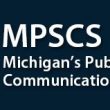How Project 25 two-slot TDMA works
Last month’s article, “Why TDMA makes sense for P25,” addressed the decisions by the Project 25 Steering Committee that led to the acceptance and adoption of a proposed technical path to an industry harmonized Project 25 Phase 2 two-slot TDMA solution. Highlighted were the benefits to operators of public safety systems, which include capacity improvement, reuse of existing 12.5 kHz frequency plans, the ability to meet future FCC narrowbanding requirements, and support for the migration from Phase 1 to Phase 2.
This month’s article provides a technical overview of the proposed solution currently being debated in the APCO Project 25 Interface Committee (APIC), which develops standards proposals for consideration by the Telecommunications Industry Association (TIA) TR8 Land Mobile Radio (LMR) Committee.
The P25 Phase 2 TDMA air interface uses two different schemes to modulate the 12 kb/s data stream for over-the-air transmission in a 12.5 kHz channel. The first scheme, called harmonized continuous phase modulation (H-CPM), is used in the subscriber units (mobiles and handhelds) to enable use of the same non-linear amplifiers currently employed in P25 Phase 1 FDMA units. This decision by the TDMA task group (TG) lets existing manufacturers of mobiles and handhelds reuse existing RF front-end technology and thus leverage existing investments.
The second scheme, called harmonized differential quadrature phase shift keyed modulation (H-DQPSK), is used in the base station fixed-site equipment and requires linear transmit amplifiers. As many LMR manufacturers already use linear amplifiers in their base station equipment for improved simulcast solutions, the TDMA TG was able to select this scheme with minimal impact to existing fixed infrastructure manufacturers. The term “harmonized” is applied to both schemes, as the final parameters employed by H-CPM and H-DQPSK are the consensus result of technical discussions by all active participants of the TDMA TG.
The following summarizes the proposed TDMA air interface key parameters:
-
12 kb/s air link rate for two-slot TDMA.
-
Modulation:
- H-DQPSK for downlink (outbound);
- H-CPM for uplink (inbound).
-
Dual-rate vocoder.
-
30 msec slot size.
-
Concentrated signaling:
- Dedicated signaling burst per superframe;
- Inverted position to allow subscriber units to switch and listen when transmitting (bidirectional).
-
FDMA control channel (Phase 1 CCH base) with TDMA extensions for migration and compatibility with Phase 1.
-
TDMA voice channels that are not synchronized to the FDMA control channel.
Let’s now examine each of these components individually.
12 kb/s air link rate for two-slot TDMA
Project 25 Phase 2 TDMA uses a 12 kb/s rate on the air interface, where Phase 1 uses 9.6 kb/s. The increase in the bit rate is needed to accommodate the signaling and slot assignment required for two voice paths and the enhanced half-rate IMBE vocoder.
The 9.6 kb/s bit rate for Phase 1 is the sum of 7.2 kb/s for the full rate IMBE vocoder (with error correction) plus 2.4 kb/s for the link management and in-channel signaling.
The 12 kb/s bit rate for Phase 2 is the sum of two 3.6 kb/s streams for the two enhanced half-rate IMBE vocoders (2 × 3.6 = 7.2) plus the 4.8 kb/s associated link management and in-channel signaling to support two voice paths in the channel.
Modulation
Project 25 Phase 2 TDMA uses two different modulation schemes for the downlink (outbound) and uplink (inbound) radio links.
H-DQPSK is a non-coherent modulation technique that splits the information stream into two channels, delays one channel by 90° in phase (quadrature) and then recombines the two phase shift keyed channels using differential coding (encoding the difference of the current data word applied to the transmitter with its delayed output). Combining two channels in quadrature (again, 90° out of phase with each other) lowers the transmitted baud rate, improving the transmitted spectral characteristics. H-DQPSK modulation requires linear amplifiers in the radio base station.
H-CPM (uplink/inbound) is a common constant-envelope modulation that preserves the ability of manufacturers to use existing P25 Phase 1 RF technology in handsets and mobiles.
Dual-rate vocoder
A dual-rate vocoder is specified in the Phase 2 TDMA solution. The dual-rate vocoder will consist of the existing Phase 1 full-rate IMBE vocoder (7.2 kb/s) and extensions for the enhanced half-rate vocoder (3.6 kb/s). The TDMA solution will use the enhanced half-rate IMBE vocoder for voice operations.
To achieve interoperable communications, the P25 Phase 2 TDMA solution uses a Phase 1 mode (full-rate IMBE) for compatibility with Phase 1 users in cross-patched and emergency operations. The Phase 1 mode also is used for direct or talk-around operations. TDMA systems typically require timing from the radio base station equipment via the system control channel and traffic channels for slot synchronization. This makes direct-mode operations challenging for TDMA when no master timing reference from a base station is present. While there are some mechanisms — such as TDMA vehicular repeaters and master/slaving of portables and mobiles — to facilitate direct-mode TDMA operations, such communications will require further study.
An issue for TDMA systems that interoperate with a Phase 1 system concerns the loss of radio channel capacity in the Phase 2 system when a radio channel is switched from two-voice-path (Phase 2) operation to single-voice-path (Phase 1) operation. Future work for P25 Phase 1 may address use of the dual-rate vocoder in Phase 1 systems and subscriber units. This would allow Phase 1 units so equipped to switch to the enhanced half-rate vocoder for communications with Phase 2 units with no loss of capacity in Phase 2 or Phase 1 systems.
30 millisecond slot size
The 30 msec slot size defined for the two-slot TDMA solution provides for the following formats:
- One slot represents 360 bits and 30 msec.
- 12 slots are contained in a 360 msec superframe. (Phase 1 uses a 360 msec superframe.)
- Four voice frames in a slot.
- Two voice frames plus some signaling (encryption sync) in a slot.
- Dedicated signaling slot (P25 link control words) plus synchronization. The signaling conveys call setup, call teardown and in-call progress signaling messages.
Concentrated signaling
Phase 2 systems will use a concentrated signaling scheme with a dedicated signaling slot in each superframe. This slot will occur in an inverted position, meaning the signaling slot for Slot 1 will appear in the Slot 2 stream and vice versa. This inverted slot scheme ensures a transmitting subscriber unit has adequate time to momentarily switch from transmit to receive, and to look at its signaling slot from the base station without impairing the uplink voice traffic.
The signaling slot location and switching scheme enables bidirectional signaling when a subscriber unit is talking, a significant improvement over Phase 1 systems. Bidirectional signaling means a talking subscriber can be alerted, and if necessary, shut down for emergency situations. Current Phase 1 implementations can take over a channel and allow communications to the talk group with the exception of the talker, who is not aware that the talk group has been pre-empted.
The other benefit of bidirectional signaling is transmitter power control. A talking unit can receive power control updates to mitigate interference.
FDMA control channel (Phase 1 CCH base)
The Phase 2 TDMA solution uses the existing P25 Phase 1 FDMA control channel with extensions added to allow determination of subscriber unit TDMA capabilities (i.e., two-slot or future four-slot), vocoder capabilities (full-rate or half-rate IMBE), and initial FDMA/TDMA frame synchronization. Additionally, the control channel enables outbound messages to advise subscriber units of TDMA channel capability on the base station. Phase 1 FDMA subscriber units will ignore any messages pertinent to TDMA subscriber units.
The use of the existing Project 25 Phase 1 control channel provides an easy migration path for existing Phase 1 systems, as the same Phase 1 FDMA control channel can control and manage both Phase 1 FDMA and Phase 2 TDMA subscriber units on the same radio site. Interoperability is facilitated because Phase 1 subscriber units can recognize and operate on a Phase 2 site as long as some traffic channels are available for Phase 1 voice operations.
TDMA voice channels
To ease the migration from Phase 1 to Phase 2, the initial TDMA proposal provides the ability for a Phase 1 control channel (CCH) to control Phase 2 traffic channel (TCH) assignments without synchronizing the CCH to the TCH. Traditional TDMA implementations require synchronization of the TCHs to the CCH. The Phase 2 air interface protocol has been developed to allow an acceptable low latency, CCH-to-TCH switching without requiring a synchronization scheme.
Additionally, TDMA synchronization with the FDMA control channel would require a complete redesign of the Phase 1 FDMA control channel to accommodate both Phase 1 and Phase 2 subscriber units. Phase 2 TDMA subscriber units, when monitoring the Phase 1 FDMA control channel, can use the current Phase 1 synchronization broadcast message (with minor clarifications for TDMA operations) to determine timing alignment with the inbound (uplink) TDMA traffic channel.
A two-slot TDMA solution for P25 Phase 2 benefits users by meeting FCC spectral-efficiency mandates, creating a migration path from Phase 1 to Phase 2, nearly doubling system capacity, improving emergency management, and delivering control channel capacity equivalent to Project 25 Phase 1.
The APIC and TR8 subcommittees are working hard to vet the proposed technical solution, while the P25 Steering Committee and the User Needs Subcommittee are providing critical user input and guidance to ensure the solution meets the needs and requirements of public safety users and operators.
W. Roy McClellan III, P.E., is the director of standards and regulatory for EADS Secure Networks North America. He also is the chairman of APCO’s Project 25 TDMA and ISSI Task Groups.
ANTICIPATED TWO-SLOT TDMA BENEFITS
Improved channel efficiency:
- Increases the number of voice paths in 12.5 kHz radio channels (2:1 for two-slot TDMA).
- Minimizes frequency plan churn when migrating from 12.5 kHz FDMA to 12.5 kHz two-slot TDMA.
- Meets future FCC spectral efficiency requirements.
Ease of migration from Phase 1 to Phase 2:
- Phase 1 FDMA control channel with extensions for TDMA.
- Compatible IMBE vocoder family.
Improved emergency management for users:
- Bidirectional signaling allows emergency alerting and informed preemption of talkers.
Subscriber unit power uplink (inbound) control for interference mitigation:
- Via bidirectional signaling.
Slotted/burst transmission of subscriber units improves subscriber unit battery life:
- TDMA subscriber units transmit approximately 50% of the time vs. FDMA.
Signaling and control channel capacity equivalent to Phase 1.
















